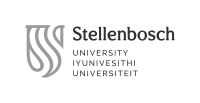S2421 Cities and Global Change: Urban Policy Analysis and Design
Professors
Schedule
Course description
It is widely recognized that more than half of the world's population lives in urban areas. People commonly refer to a "city" as a socio-spatial settlement whose definition changes according to different historical phases and geographical and political contexts. Dynamics of urbanization, which have partially slowed down in the Global North, occur today at a massive pace and on a much larger scale in the so-called Global South.
As globalization continues to strengthen worldwide, its impacts – positive and negative – become evident locally: cities are the place where emerging challenges (i.e., climate change, migrations, aging, health emergencies, financial and economic crisis, political upheavals, etc.) are directly experienced by people in their every-day lives. However, cities are also the context where such issues concretely become a matter of policy intervention.
The course focuses on cities considered complex systems where natural, human, socio-economic, political, and built environments co-evolve. It aims to explore how urban challenges can be tackled today by integrating different approaches to create a resilient and sustainable urban future.
The goals of the course are the following:
1) to introduce students to a set of core issues about contemporary urbanization and the changing morphology and socio-economic character of contemporary cities with a worldwide outlook;
2) to introduce students to an understanding of the major interrelated forces that drive the changes and challenges shaping cities in the current era of globalization;
3) to introduce students to the field of public policy analysis and design, with specific reference to the realm of urban policy;
4) to introduce students to the use of Geographic Information Systems (GIS), and other softwares as policy-making support tools to analyze and map contemporary urban challenges.
Learning outcomes of the course
At the end of the course, students are expected to:
1) understand how contemporary cities work and change as interrelated systems (natural, human, socio-economic, cultural, political, built environment);
2) critically understand the forces, the challenges, and the effects (both positive and negative) of global changes on cities;
3) analyze urban phenomena by moving across multidisciplinary languages, approaches, concepts, and theories (economics, environmental sciences, urban planning, architecture, political science, etc.);
4) acquire the capacity to design and conduct fieldwork by applying the most pertinent methods and tools to analyze policy and urban design processes.
Teaching methods
The course is organized as follows:
1) frontal lectures given by the professors (core issues about contemporary urbanization, cities, and public policy analysis);
2) a cycle of lectures organized by the students (global challenges shaping contemporary cities);
3) urban analysis and policy design workshop (case-study development using planning and design techniques, software and tools);
4) field trips on case-study areas (where students will have the opportunity to meet and discuss with the relevant stakeholders involved in planning activities);
5) in itinere tutoring of group-works.
With the general aim of enhancing the students’ skills to communicate and work within multicultural and multidisciplinary environments, the course is intended to favor interaction among participants as much as possible.
The course is divided into three modules. Module 1 introduces students – from a theoretical perspective – to urbanization processes, cities, and the global changes they are undergoing today; Module 2 introduces students to the use of Geographic Information Systems (GIS), a fundamental tool for analyzing, mapping and communicating researches on complex places, and other digital tools to collect information through fieldwork research activities. In module 3, students will acquire practical skills by analyzing, through the lens of public policy analysis, selected challenges that Venice (a peculiar global city) is experiencing as a result of the current global forces: climate change, depopulation, aging, deindustrialization, touristification, etc. Structured as an “urban analysis and policy design workshop”, Module 3 adopts a learning-by-design approach, testing the theories and skills presented within Modules 2 and 3. Students will be organized in work groups (with a mix of nationalities and university backgrounds), which will work together to critically investigate the underlying complexity of such policy areas, proposing policy initiatives and identifying planning goals. In addition to GIS, students will also acquire skills regarding qualitative research methods such as in-depth interviews with stakeholders, planning and design document analysis, newspaper analysis, and field observations.
Requirements
Students are expected to do the required readings and to attend class regularly, as attendance is compulsory (see VIU Program Regulations). Required readings will be designated every week.
Considering students’ Countries of origin and university backgrounds, they will be encouraged to participate and discuss actively during the lessons to enhance a regular exchange of points of view, ideas, and perspectives.
The professors will offer Continuous tutoring with reference to the development of the case study.
Penalty grades will be assigned to students who fail to observe these rules. This means that, if not required, unexcused absences, lateness, low participation in class discussions and disrupted classes will reduce the final grade.
Evaluation methods
The course will consist of three autonomous evaluations:
1) assignment to be discussed in class: a lecture given by the students – organized in work groups – on a selected global challenge shaping contemporary cities (percentage of the overall grade = 20%);
2) mid-term evaluation: an in-class individual multiple-choice test concerning the frontal lectures (percentage of the overall grade = 25%);
3) final evaluation: the presentation of the group works (percentage of the overall grade = 40%).
In addition, 15% of the overall grade will be attributed according to these criteria: class attendance, participation, and interaction, and submission of the required assignments.
Bibliography (selected chapters)
Beck U. (2016). The metamorphosis of the world: How climate change is transforming our concept of the world. John Wiley & Sons.
Brenner N. and Schmid C. (eds.) (2013). Implosions/explosions. Towards a study of planetary urbanization, Berlin: Jovis Verlag.
Desjardins J. (2020). Signals. Charting the new direction of the global economy, Canada: Visual Capitalist.
Lynch K. (1964). The image of the city. MIT Press.
Ferrari E. and Rae A. (2019). GIS for planning and the built environment: an introduction to spatial analysis, London: Red Globe Press.
JRC (2019). The future of cities. Opportunities, challenges, and the way forward. Luxembourg: Publications Office of the European Union.
Rogers D., Keane A., Alizadeh T. and Nelson J. (eds) (2020). Understanding urbanism. Springer.
Sapru R.K. (2013). Public policy. Art and craft of policy analysis. Delhi: PHI Learning Private Limited.
Last update: January 22, 2024


















